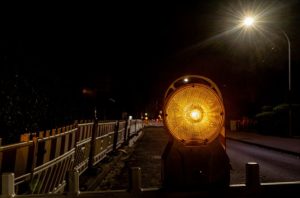
One does not always know which characteristics of our country attract the attention of the foreign visitor. Whatever the answer, our readers will surely agree with us: the proliferation of beacons on public roads is undoubtedly part of the short list of national eccentricities.
Less well known, however, are the legal debates to which the beacons have given rise. The case we are discussing today is one of them.
A motorcycle driver was riding along a major avenue at 7:00 a.m. on December 30 when he rammed an illuminated beacon that was turned off in the middle of a main road. The beacon presumably pointed to a pothole drilled by OSE, which had been carrying out repair work on that avenue for months. The driver of the motorcycle died as a result of the crash.
The deceased’s concubine filed a lawsuit against OSE to claim compensation for material damages, moral damages and loss of earnings. In her letter, the concubine maintained that the accident was caused by the lack of service from OSE: the works had been delayed for months, and, fundamentally, they were not adequately signposted, to the point that the beacons were turned off at the time of the accident.
The concubine’s proposal was unanimously rejected by the three judgments that ruled the case. In the view of our courts, the plaintiff failed to fully meet her burden of proof, namely that the accident (and the subsequent death of the ill-fated motorcyclist) was due to OSE’s lack of service and poor maintenance of the beacons, which were switched off at the time of the accident.
The sentences agreed that the accident was exclusively the victim’s fault, due to his incompetence and inattention. Although the beacons may have been turned off, this in no way justifies the driver’s failure to have noticed the existence of the beacons and the pothole they were intended to indicate. Especially since the accident occurred in summer, at a time when natural light provides ample visibility, even when the beacons are off.
In short, the applicant failed to prove that the condition of the beacons was the cause of the accident. On the contrary, the evidence provided at the trial highlighted the deceased driver’s own shortcomings: that is, the high levels of alcohol in his blood, the omission in the use of the helmet, and his special inattention (to the point that he did not even manage to avoid the beacon and the pothole).


